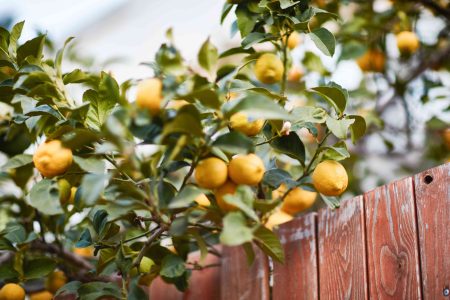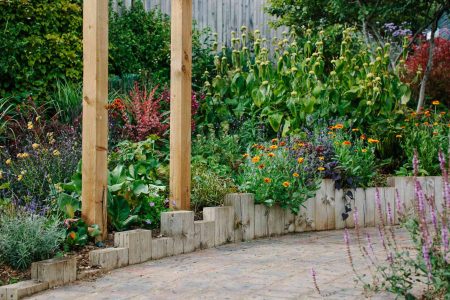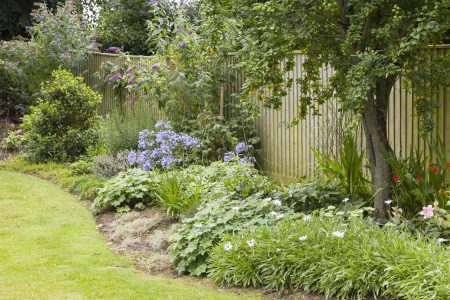One of the most satisfying gardening jobs is laying mulch for the first time. When done well, it creates an instantly defined, crisp appearance to your garden beds, and can make any landscaped area look polished and beautiful.
But fast forward a few seasons and your once-fresh mulch can look drab, dingy, and flat. This is a great sign you should probably replace your mulch, but do you really have to wait until things get this bad?
As it turns out, no. According to experts, most home gardeners should replace their mulch at least once a year. And, if you plan it right, you can do it so that your garden beds always look lovely.
Meet the Expert
- Gene Caballero is the co-founder of GreenPal, an online service for finding landscapers.
- Sarah Warner is the Greenhouse Manager at the Case Western Reserve University Farm.
- Marek Bowers is the founder of Bolder Green, a website that offers sustainable gardening advice.
How Do You Know It’s Time to Replace Your Mulch?
According to Gene Caballero, co-founder of GreenPal, one of the reasons it’s so tricky to know when to replace your mulch is because this isn’t a one-size-fits-all situation. Caballero says it largely depends on the type and condition of your mulch.
“Organic mulches, like wood chips or bark, generally need to be replaced once a year as they decompose and enrich the soil,” he says.
On the other hand, if you use an inorganic mulch, like rubber or rocks, Caballero says you might only need to do a refresh every year, depending on the appearance.
Sarah Warner, Greenhouse Manager at the Case Western Reserve University Farm, agrees that frequency depends on your type of mulch, but her criteria is slightly different.
“The larger the mulch particles, the less you may need to mulch, and the smaller the mulch particles the more you may need to mulch,” she says.
Warner explains that wood chips might take longer to break down while leaves will probably need to be replaced more often.
“Adding wood chips once a year may suffice but adding leaves three times a year may be needed,” she says.
Want more gardening tips? Sign up for our free gardening newsletter for our best-growing tips, troubleshooting hacks, and more!
You Can Source Free Mulch
If you’re holding off on replacing mulch because of your personal gardening budget, Marek Bowers, founder of Bolder Green, has a great tip.
“Sometimes you can get free mulch from your city,” he says. “Look up ‘free mulch near me’.”
This means, paired with local research for finding free plants, you can have the garden of your dreams with just a little extra legwork.
Look for Warning Signs at the Start of the Season
Caballero says the best way to decide if you need to change out your mulch is to inspect it at the start of the season. Things might look fine at first glance, but there are little things that might signal a replacement is in order.
“If [your mulch] is noticeably thinner or degraded, it’s time to add a new layer to maintain its benefits like moisture retention, temperature regulation, and stopping weeds from growing,” Caballero says.
Aim to Replace in Spring or Late Fall
Cabellero assures us there’s no wrong time to replace mulch, but there are two ideal windows: spring or late fall.
This should sit outside your prime growing season, and allow for your garden to see the biggest benefits. On the other hand, replacing it too often is a waste of money—so don’t overdo it, either.
Replacing Mulch Really Benefits Your Garden
It might be easy to brush mulch off as an aesthetic choice for your garden beds, but not replacing it can have negative consequences. Caballero says this can lead to soil erosion, weed growth, and insufficient soil insulation.
Remove the Old Mulch First
Regardless of when you swap out your mulch, one important step you should take, says Cabellero, is actually removing the old mulch.
“It’s best to remove the old layer to prevent matting and to ensure the new mulch can effectively regulate temperature and moisture,” he says.
Read the full article here














